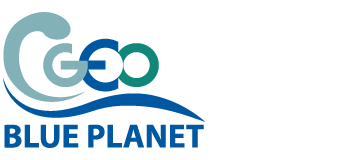GEO Blue Planet’s mission is to bridge the gap between ocean and coastal data and decision-making by ensuring that Observation and Prediction are accessible, understandable, and usable for stakeholders across sectors. It aims to support sustainable ocean and coastal management through collaboration, innovation, and capacity building.
Learn more about the Ocean and GEO Blue Planet’s Mission!
The Role of the World’s Ocean
The world’s oceans play an integral role in supporting life on Earth. Occupying over 70% of the Earth’s surface, oceans are instrumental in providing a host of ecosystem services. It is largely responsible for regulating global weather and climate; producing more than half of the world’s oxygen and, absorbing more than 50% of the carbon dioxide released into the atmosphere. Oceans also provide support to the global economy through energy production, transportation, shipping, and recreation. Oceans also support the livelihoods of inhabitants along the 372,000 miles (620,000km) of global coastline. In fact, approximately 2.4 billion people live within 60 miles (100km) of the oceanic coast and rely on its resources to support their daily lives. However, human activity and increased settlement along coastal zones have put significant amounts of pressure on coastal and marine resources.
Our Ocean and Coasts Under Threat
- Climate Change
Rising ocean temperatures, sea level rise, and ocean acidification disrupt marine ecosystems and coastal communities. - Pollution
Includes plastic waste, chemical runoff, oil spills, and nutrient loading, which degrade water quality and harm marine life. - Overfishing
Unsustainable fishing practices deplete fish stocks, alter food webs, and threaten biodiversity. - Habitat Destruction
Coastal development, bottom trawling, and dredging damage critical habitats like coral reefs, mangroves, and seagrass beds. - Shipping and Maritime Traffic
Increases noise pollution, risk of invasive species, and potential for accidents and spills. - Resource Extraction
Activities like deep-sea mining and offshore drilling pose risks to fragile ecosystems and biodiversity. - Invasive Species
Non-native species introduced through ballast water or aquaculture can outcompete native species and disrupt ecosystems.
Play with Ocean Observation and Prediction data
MyOcean Light, developed by the Copernicus Marine Service, is an intuitive, web-based visualization tool that allows users to explore key ocean variables—such as temperature, salinity, currents, and chlorophyll—in four dimensions: longitude, latitude, depth, and time. Designed for intermediate users, it enables interactive map navigation, data download, and sharing of visual outputs like images, videos, and animations. For more advanced exploration, MyOcean Pro offers access to the full catalogue of marine data products with enhanced filtering and customization options.
Key Numbers from the Starfish Barometer
The Starfish Barometer, launched on World Ocean Day (8 June 2025) during the Third United Nations Ocean Conference (UNOC3) in Nice, is a new initiative offering an annual, science-based snapshot of the Ocean’s health and its interdependence with humanity. Each edition highlights globally significant developments, grounded in the latest scientific evidence, to inform policy and public awareness.
Learn More The State of the Ocean IOC/UNESCO Report
The State of the Ocean Report, published by the Intergovernmental Oceanographic Commission of UNESCO (IOC-UNESCO), offers an annual, science-based overview of the ocean’s physical, chemical, ecological, and socio-economic conditions. Structured around the UN Decade of Ocean Science outcomes, the report highlights key trends such as accelerated ocean warming, deoxygenation, acidification, and biodiversity loss, while also showcasing solutions like marine protected areas and blue carbon ecosystems. It serves as a vital tool for policymakers, researchers, and stakeholders to monitor progress and guide action toward a healthy and sustainable ocean.


